Waterproof Aerated Bricks from Stone Powder Waste through Nano-TiO2 Structured Hydrophobic Surface Modification
Abstract
:1. Introduction
2. Materials and Methods
2.1. Fabrication of Aerated Bricks with Surface Modification
2.2. Characterizations
3. Results and Discussion
4. Conclusions
Supplementary Materials
Author Contributions
Funding
Conflicts of Interest
References
- Ji, Y.X.; Rong, X.; Zhong, H.; Wang, Y.H.; Wang, S.F.; Lu, L. Making Marble Powder Waste Profitable by Using Nano-TiO2 Surface Modification for Air Quality Improvement Applications. J. Nanomater. 2017, 2017, 6501793. [Google Scholar] [CrossRef]
- Aliabdo, A.A.; Abd Elmoaty, A.E.M.; Auda, E.M. Re-use of waste marble dust in the production of cement and concrete. Constr. Build. Mater. 2014, 50, 28–41. [Google Scholar] [CrossRef]
- Ergün, A. Effects of the usage of diatomite and waste marble powder as partial replacement of cement on the mechanical properties of concrete. Constr. Build. Mater. 2011, 25, 806–812. [Google Scholar] [CrossRef]
- Bilgin, N.; Yeprem, H.A.; Arslan, S.; Bilgin, A.; Günay, E.; Maroglu, M. Use of waste marble powder in brick industry. Constr. Build. Mater. 2012, 29, 449–457. [Google Scholar] [CrossRef]
- Hebhoub, H.; Aoun, H.; Belachia, M.; Houari, H.; Ghorbel, E. Use of waste marble aggregates in concrete. Constr. Build. Mater. 2011, 25, 1167–1171. [Google Scholar] [CrossRef]
- Wong, Y.; Tong, L.; Hu, Y.; Wu, P. A self-assembly and high robustness super-hydrophobic coating based on waste marble powder. Mater. Trans. 2016, 57, 2127–2131. [Google Scholar] [CrossRef]
- Mostafa, N.Y. Influence of air-cooled slag on physicochemical properties of autoclaved aerated concrete. Cem. Concr. Res. 2005, 35, 1349–1357. [Google Scholar] [CrossRef]
- Huang, X.Y.; Ni, W.; Cui, W.H.; Wang, Z.J.; Zhu, L.P. Preparation of autoclaved aerated concrete using copper tailings and blast furnace slag. Constr. Build. Mater. 2012, 27, 1–5. [Google Scholar] [CrossRef]
- Aulakh, D.S.; Singh, J.; Kumar, S. The Effect of Utilizing Rice Husk Ash on Some Properties of Concrete—A Review. Curr. World Environ. 2018, 13, 224–231. [Google Scholar] [CrossRef]
- Zheng, D.D.; Ji, T.; Wang, C.Q.; Sun, C.J.; Lin, X.J.; Hossain, K.M.A. Effect of the combination of fly ash and silica fume on water resistance of Magnesium–Potassium Phosphate Cement. Constr. Build. Mater. 2016, 106, 415–421. [Google Scholar] [CrossRef]
- Johnson R.E., Jr.; Dettre, R.H. Contact Angle Hysteresis. III. Study of an Idealized Heterogeneous Surface. J. Phys. Chem. 1964, 68, 1744–1750. [Google Scholar] [CrossRef]
- Barthlott, W.; Ehler, N. Raster-Elektronenmikroskopie der Epidermis-Oberflächen von Spermatophyten; Akademie der Wissenschaften und der Literatur: Mainz, Germany, 1977. [Google Scholar]
- Lu, Y.; Sathasivam, S.; Song, J.L.; Crick, C.R.; Carmalt, C.J.; Parkin, I.P. Robust self-cleaning surfaces that function when exposed to either air or oil. Science 2015, 347, 1132–1135. [Google Scholar] [CrossRef] [PubMed]
- Manabe, K.; Nishizawa, S.; Kyung, K.H.; Shiratori, S. Optical Phenomena and Antifrosting Property on Biomimetics Slippery Fluid-Infused Antireflective Films via Layer-by-Layer Comparison with Superhydrophobic and Antireflective Films. Appl. Mater. Interfaces 2014, 6, 13985–13993. [Google Scholar] [CrossRef] [PubMed]
- Barthlott, W.; Mail, M.; Bhushan, B.; Koch, K. Plant Surfaces: Structures and Functions for Biomimetic Innovations. Nano-Micro Lett. 2017, 9, 23. [Google Scholar] [CrossRef] [PubMed]
- Zhong, H.; Hu, Y.; Wang, Y.H.; Yang, H.X. TiO2/silane coupling agent composed of two layers structure: A super-hydrophilic self-cleaning coating applied in PV panels. Appl. Energy 2017, 204, 932–938. [Google Scholar] [CrossRef]
- Lakhani, R.; Kumar, R.; Tomar, P. Utilization of Stone Waste in the Development of Value Added Products: A State of the Art Review. J. Eng. Sci. Technol. Rev. 2014, 7, 180–187. [Google Scholar] [CrossRef]
- Cassie, A.B.D.; Baxter, S. Wettability of Porous Surfaces. Trans. Faraday Soc. 1944, 40, 546–551. [Google Scholar] [CrossRef]
- Suzuki, S.; Ueno, K. Apparent Contact Angle Calculated from a Water Repellent Model with Pinning Effect. Langmuir 2017, 33, 138–143. [Google Scholar] [CrossRef]
- Simpson, J.T.; Hunter, S.R.; Aytug, T. Superhydrophobic Materials and Coatings: A Review. Rep. Prog. Phys. 2015, 78, 086501. [Google Scholar] [CrossRef]
- Cao, M.; Guo, D.; Yu, C.; Li, K.; Liu, M.; Jiang, L. Water-Repellent Properties of Superhydrophobic and Lubricant-Infused “Slippery” Surfaces: A Brief Study on the Functions and Applications. ACS Appl. Mater. Interfaces 2016, 86, 3615–3623. [Google Scholar] [CrossRef]
- Wang, S.F.; Fong, W.K.; Wang, W.; Surya, C. Growth of highly textured SnS on mica using an SnSe buffer layer. Thin Solid Films 2014, 564, 206–212. [Google Scholar] [CrossRef]
- Wang, S.F.; Wang, W.; Fong, W.K.; Yu, Y.; Surya, C. Tin Compensation for the SnS Based Optoelectronic Devices. Sci. Rep. 2017, 7, 39704. [Google Scholar] [CrossRef] [PubMed] [Green Version]
- Hozumi, A.; Takai, O. Effect of hydrolysis groups in fluoro-alkyl silanes on water repellency of transparent two-layer hard-coatings. Appl. Surf. Sci. 1996, 103, 431–441. [Google Scholar] [CrossRef]
- Latthe, S.S.; Imai, H.; Ganesan, V.; Rao, A.V. Superhydrophobic silica films by sol-gel co-precursor method. Appl. Surf. Sci. 2009, 256, 217–222. [Google Scholar] [CrossRef]
- Teshima, K.; Sugimura, H.; Inoue, Y.; Takai, O. Gas barrier performance of surface-modified silica films with grafted organosilane molecules. Langmuir 2003, 19, 8331–8334. [Google Scholar] [CrossRef]
- Brassard, J.-D.; Sarkar, D.K.; Perron, J. Synthesis of monodisperse fluorinated silica nanoparticles and their superhydrophobic thin films. ACS Appl. Mater. Interfaces 2011, 3, 3583–3588. [Google Scholar] [CrossRef] [PubMed]
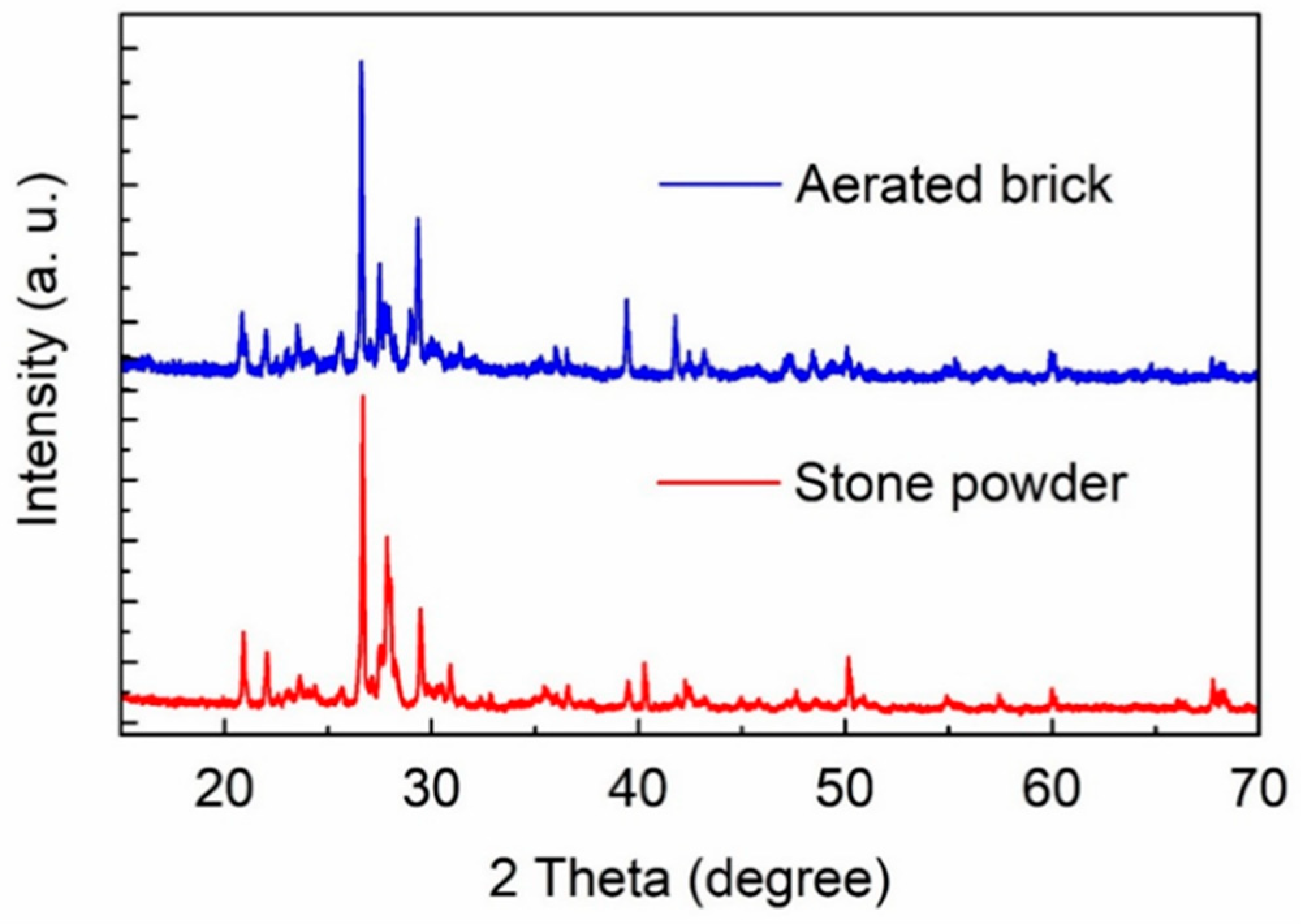

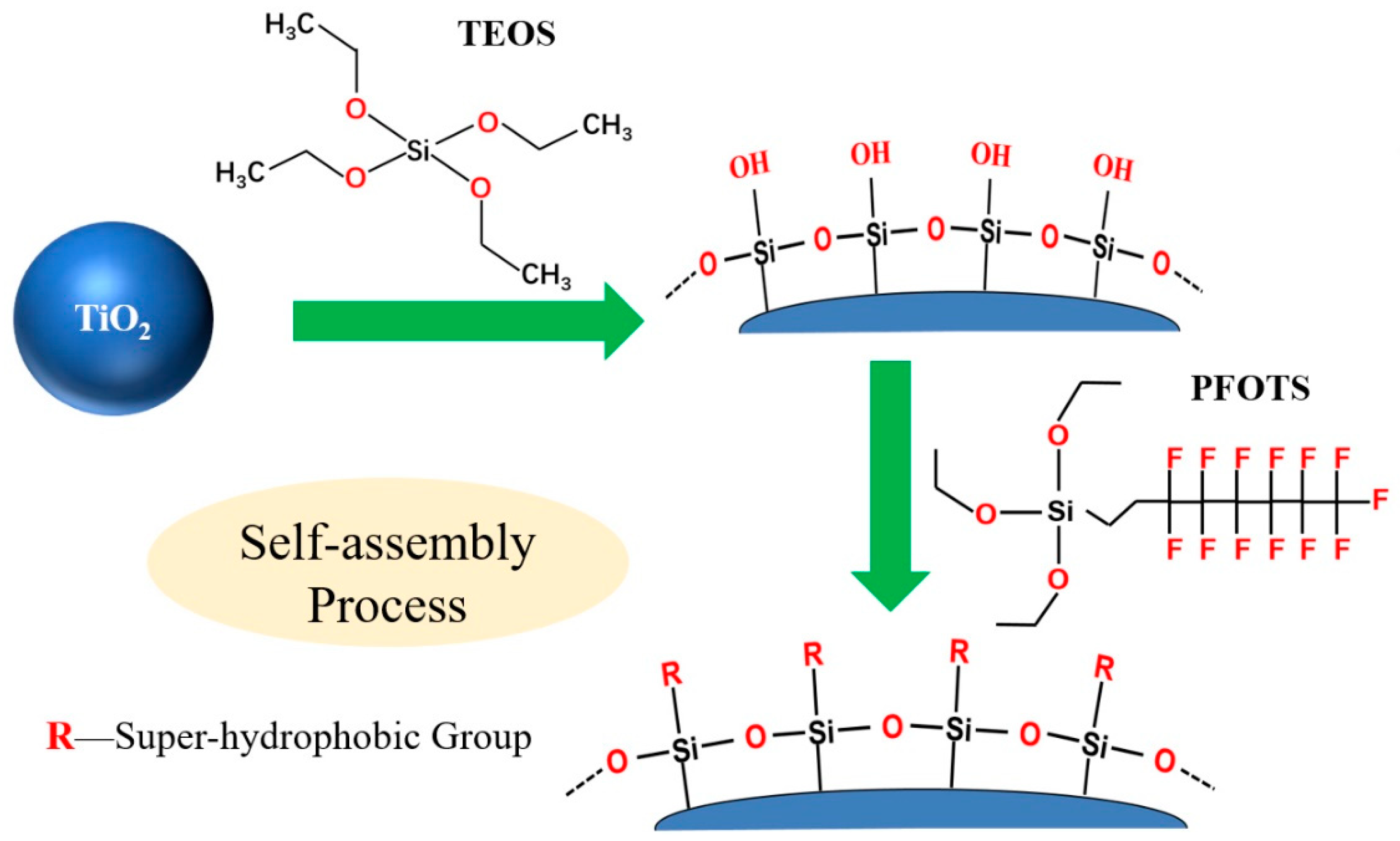
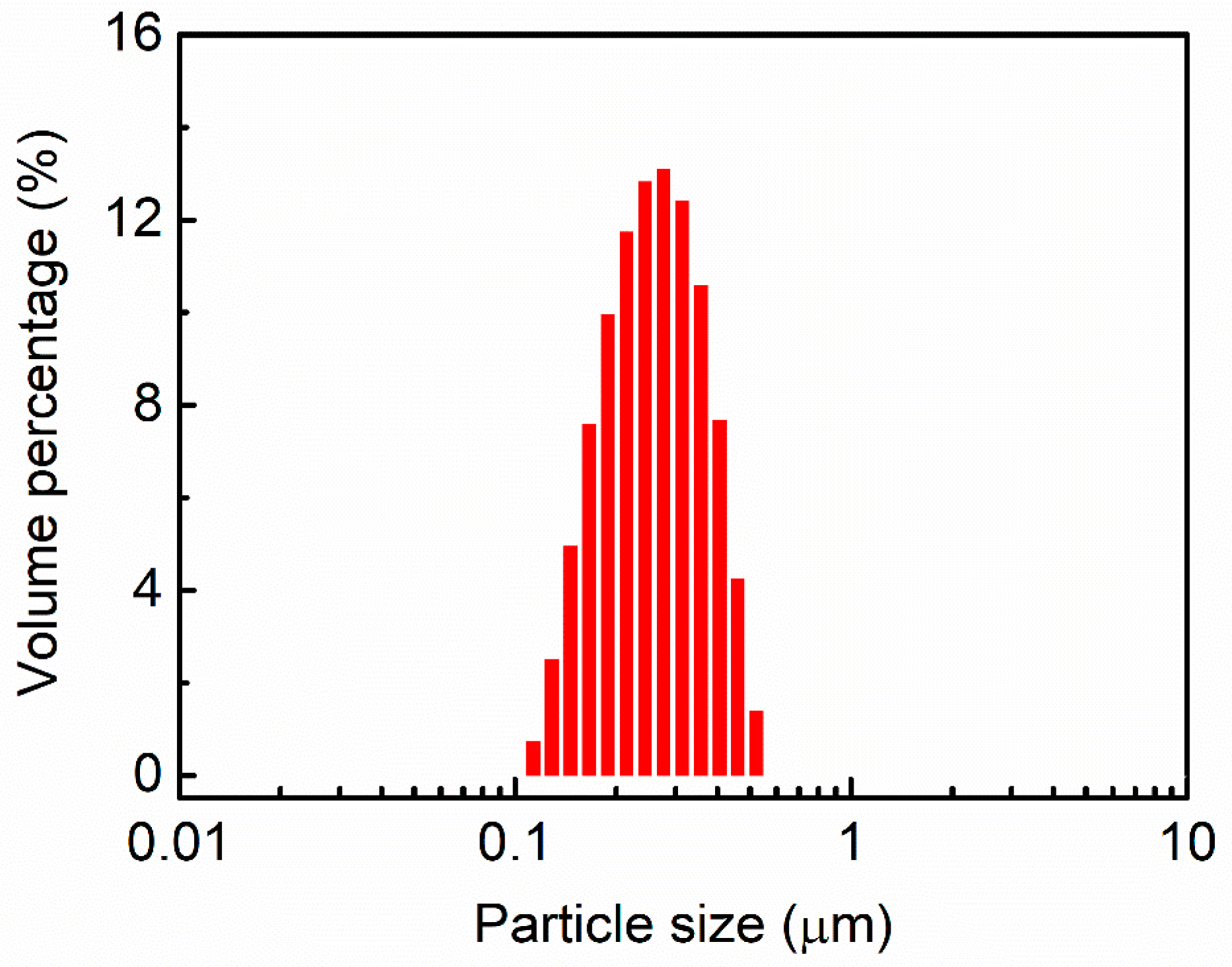
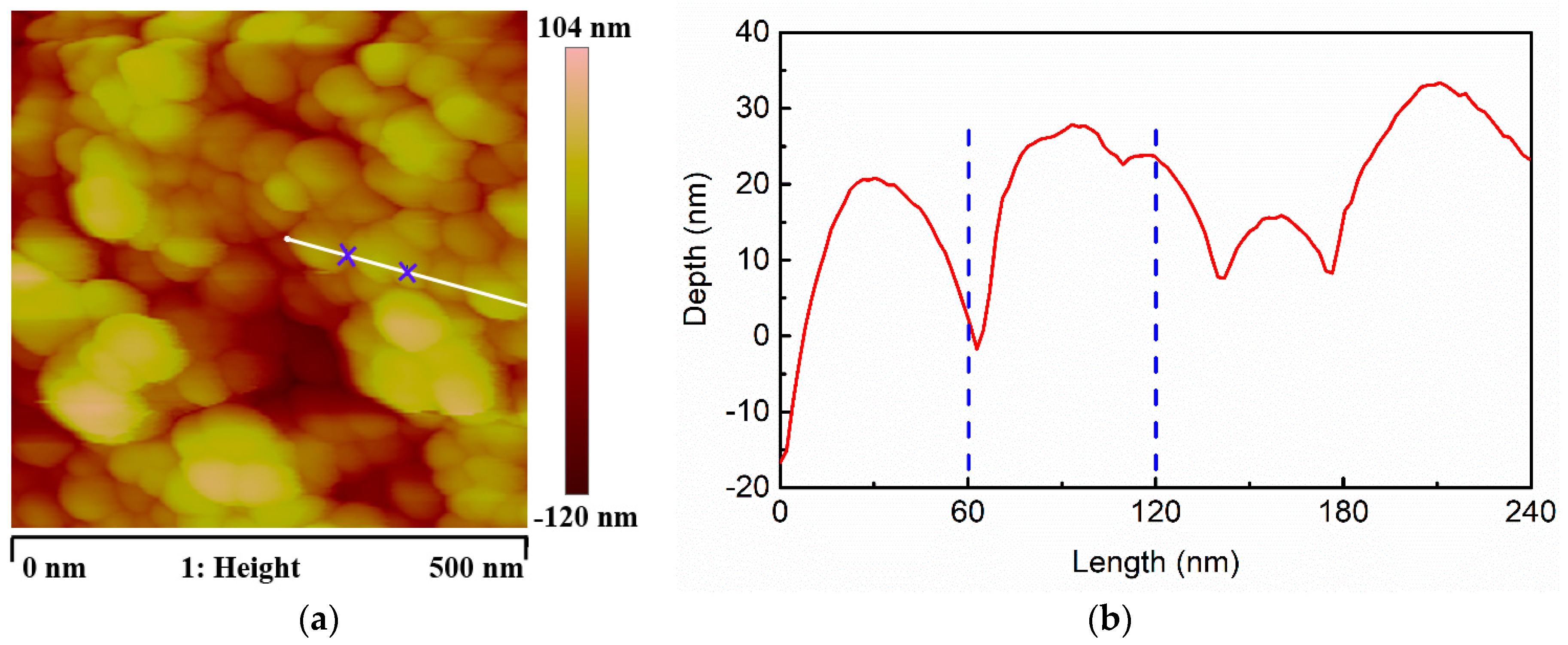
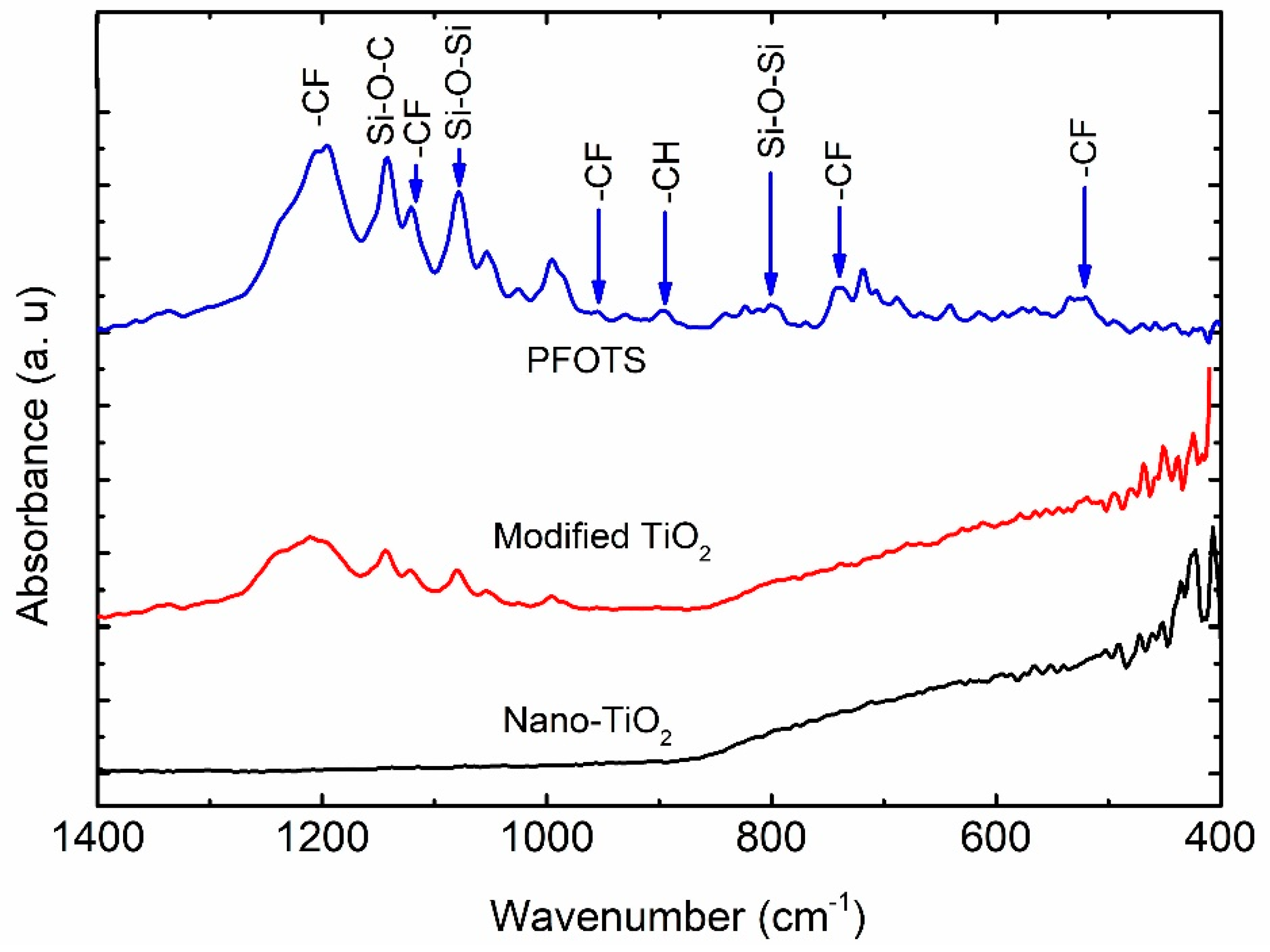


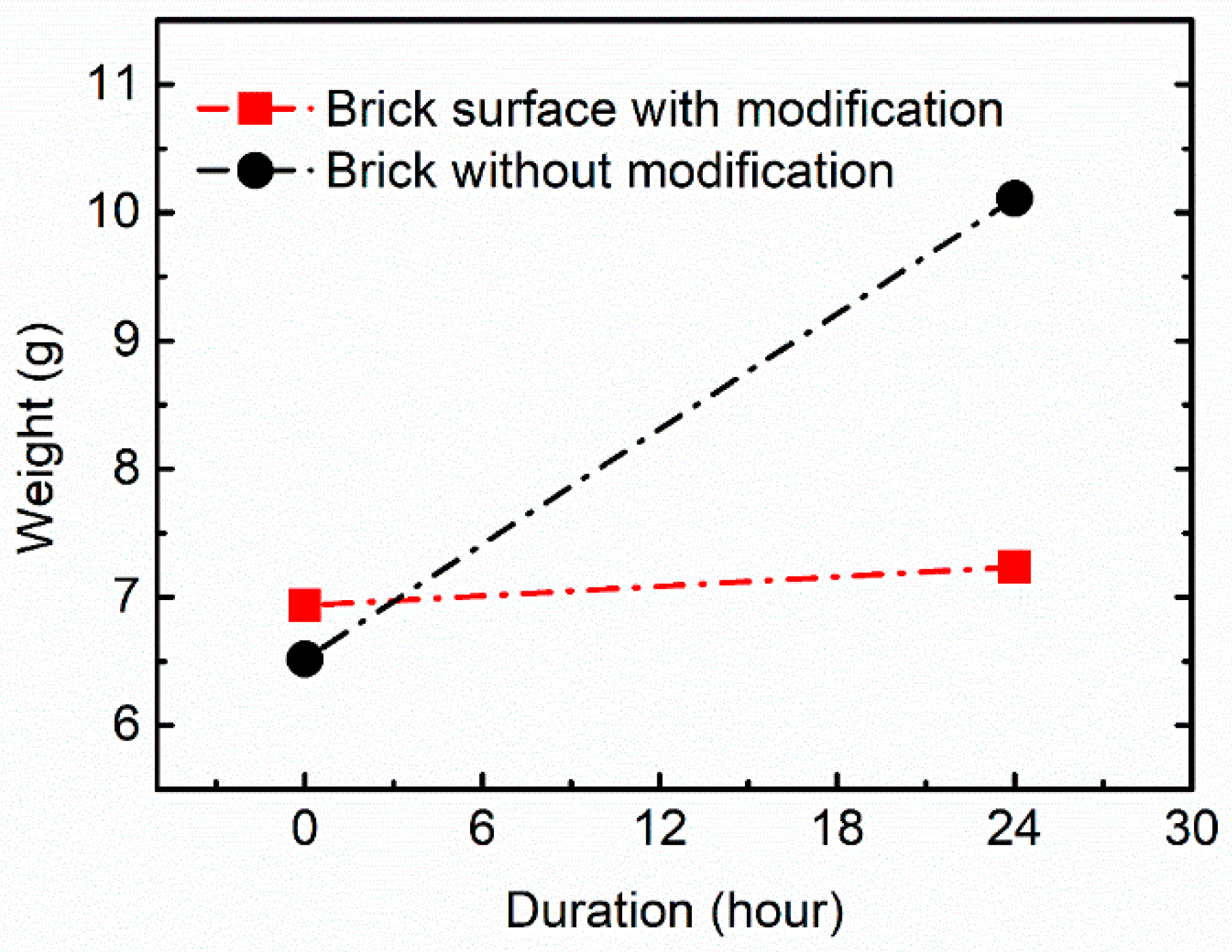
© 2019 by the authors. Licensee MDPI, Basel, Switzerland. This article is an open access article distributed under the terms and conditions of the Creative Commons Attribution (CC BY) license (http://creativecommons.org/licenses/by/4.0/).
Share and Cite
Li, T.; Zeng, S.; Ji, Y.; Shen, B.; Wang, Z.; Zhong, H.; Wang, S. Waterproof Aerated Bricks from Stone Powder Waste through Nano-TiO2 Structured Hydrophobic Surface Modification. Appl. Sci. 2019, 9, 2619. https://doi.org/10.3390/app9132619
Li T, Zeng S, Ji Y, Shen B, Wang Z, Zhong H, Wang S. Waterproof Aerated Bricks from Stone Powder Waste through Nano-TiO2 Structured Hydrophobic Surface Modification. Applied Sciences. 2019; 9(13):2619. https://doi.org/10.3390/app9132619
Chicago/Turabian StyleLi, Tao, Shaopeng Zeng, Yaxiong Ji, Boxu Shen, Zhuangmiao Wang, Hong Zhong, and Shifeng Wang. 2019. "Waterproof Aerated Bricks from Stone Powder Waste through Nano-TiO2 Structured Hydrophobic Surface Modification" Applied Sciences 9, no. 13: 2619. https://doi.org/10.3390/app9132619




